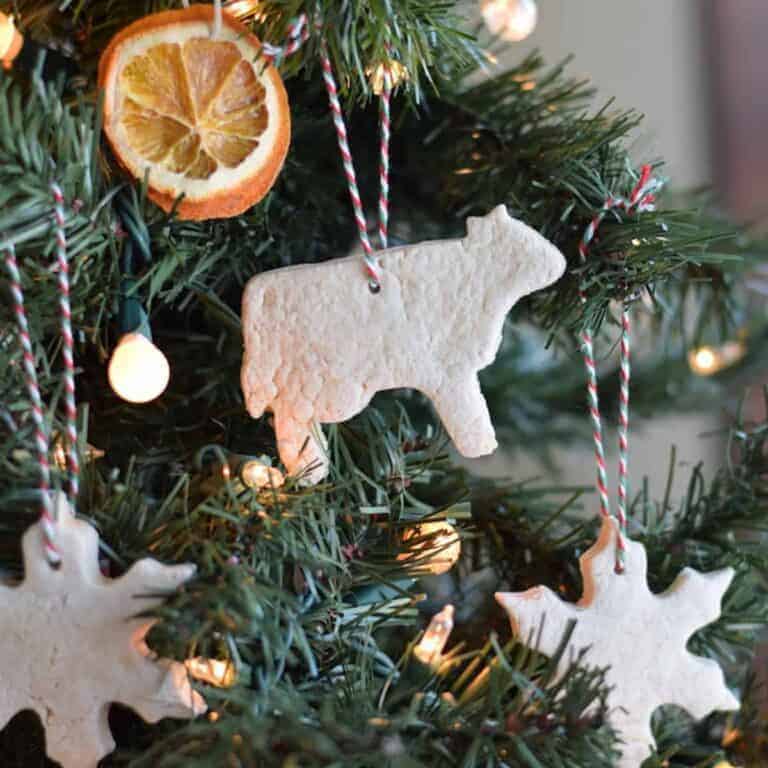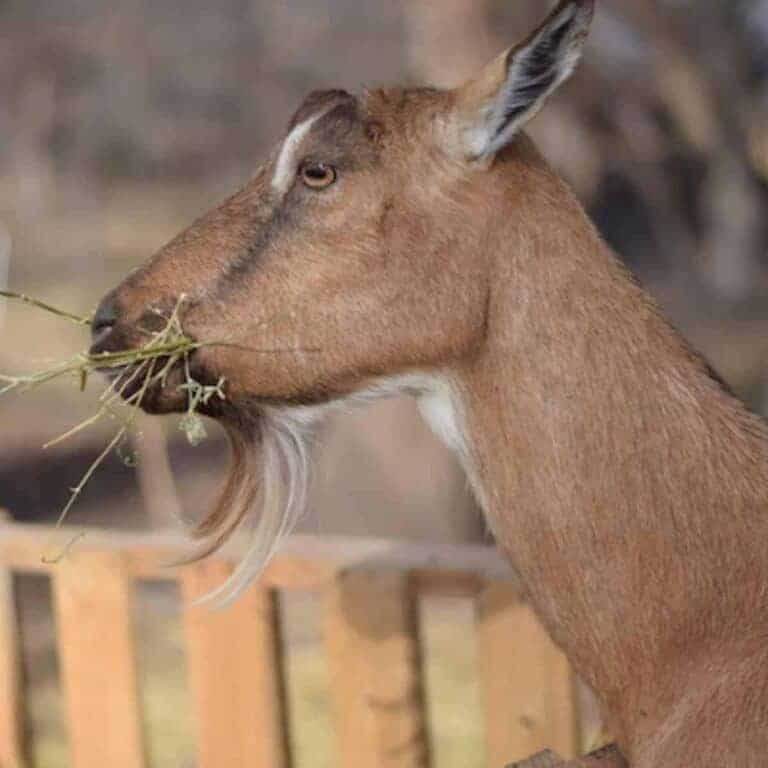Winter Chicken Coop Preparation for the Homestead
Learn how to prepare your chicken coop for winter with these essential tips. Keep your chickens warm, healthy, and safe all season long!
In this post, I’m sharing our methods and what we do to prepare the chicken coop for winter.
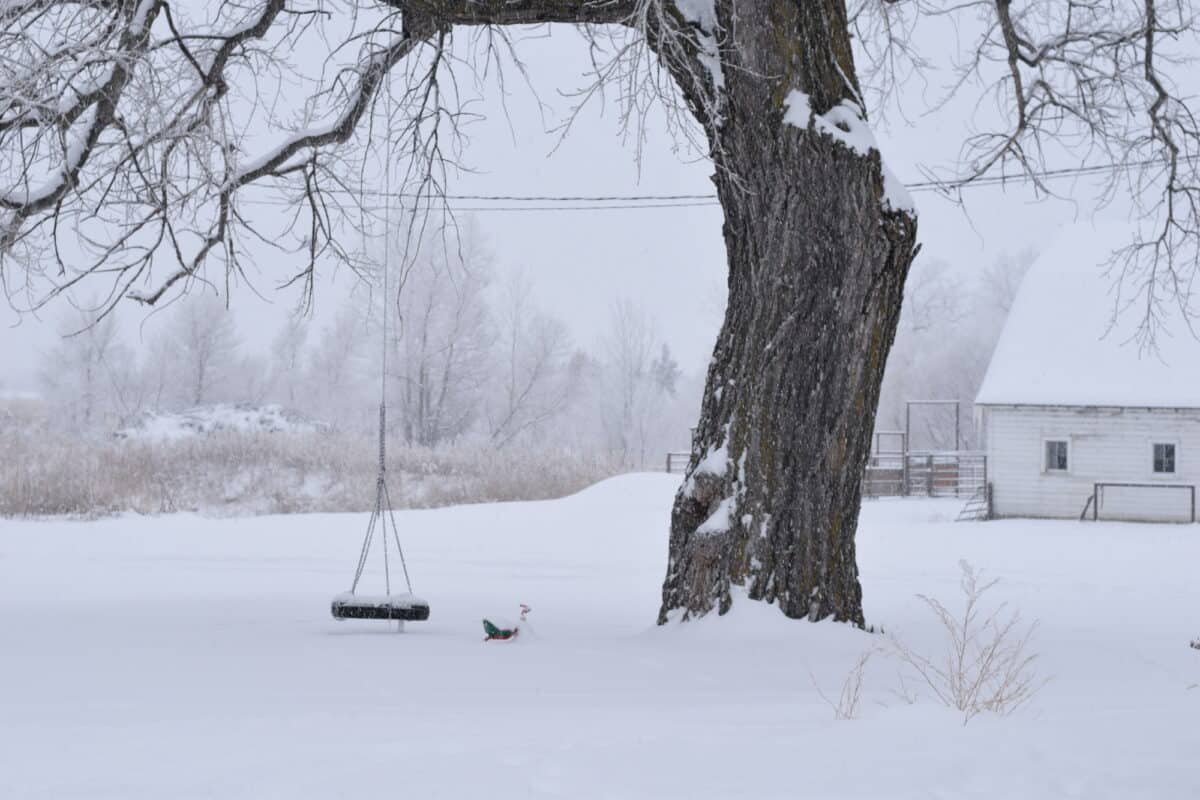
Living in Nebraska typically means cold, snowy winters. And some winters are harder than others. Living on a small farm means that we need to keep our animals safe, healthy, and happy.
Importance of Insulation and Ventilation
When it comes to insulating and ventilating chicken coops for winter, it’s essential to strike the right balance. Proper insulation helps keep the coop warm, but good ventilation is necessary to prevent moisture buildup, which can lead to frostbite and respiratory issues in your flock.
Depending on how the coop is set up, you may need to add additional items to keep your chickens warm during the cold weather.
Generally, I don’t advocate for adding additional heaters for the flock. However, we do use one only when temperatures are at sub zero for an extended amount of time.
Chicken Coop Insulation for Winter
Our preferred method is to use straw or hay to naturally insulate the coop. We also alternate between straw, hay and pine shavings as a layer on the floor of the coop.
Straw or Hay: This option is affordable, natural, and effective at trapping heat. It’s also compostable and can be used in the deep litter method.
If you pile the hay or straw around the coop, the chickens will naturally help scatter it around and give you less work in the end. 😉
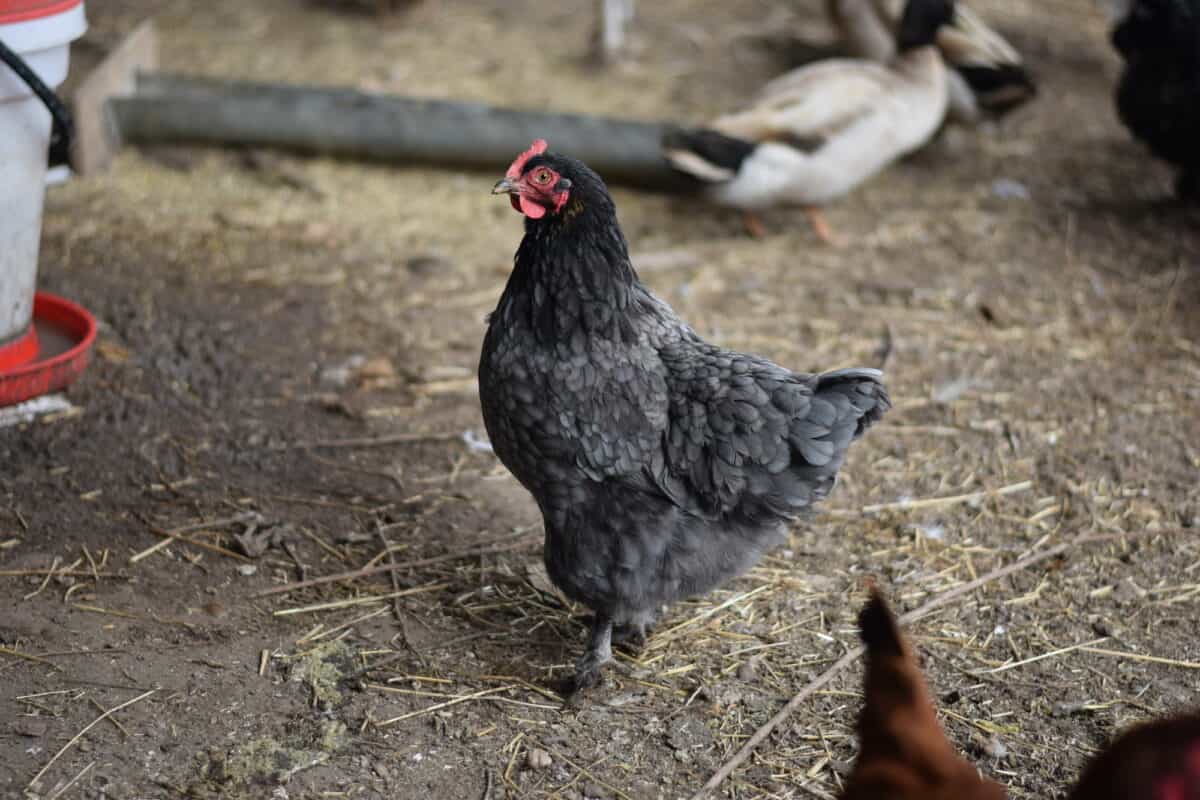
Rigid Foam Boards (Styrofoam): Great for DIY insulation. It’s lightweight, effective, and can be cut to fit walls, ceilings, and doors. Just make sure to cover it with plywood or wood panels to prevent chickens from pecking at it.
Reflective Foil Insulation: Easy to install, this type of insulation reflects heat back into the coop. It’s lightweight and thin but highly effective in maintaining warmth.
Burlap Bags: A more rustic, natural material that can be hung on the walls or ceiling to reduce drafts while retaining some warmth.
The walls and ceiling should be the primary focus. Insulating the ceiling is especially important, as heat rises and escapes through the top of the coop.
A couple of other options to try for diy insulation in your coop:
- Use recycled materials like old wool blankets or foam from packaging to line the inside walls.
- Hanging old rugs or thick curtains inside can help prevent cold drafts.
Generally speaking, we personally prefer to use natural materials whenever possible. But make the best sustainable choice that works for your homestead.
Install weather stripping around doors and windows to reduce drafts. You can also use removable plexiglass to cover windows but leave them open slightly for ventilation. This is a great option for allow the coop to air out temporarily during breaks in the cold spells.

Ventilation Recommendations
Ventilation is crucial to let moisture escape and keep the air in the coop fresh, even in the winter. Chickens produce moisture through their breath and droppings, so without ventilation, condensation forms, leading to frostbite.
Roof Vents: Install vents at the top of the coop, near the roofline, where hot air and moisture can escape. Make sure these vents are sheltered to prevent rain or snow from getting inside.
Cross-Ventilation: If your coop has windows, open them slightly on opposing sides to allow fresh air to circulate. This keeps the air moving but doesn’t create strong drafts at chicken level.
Avoid Drafts: Ensure that the ventilation openings aren’t above where the chickens roost. While ventilation is important, cold drafts blowing directly onto chickens can cause them to lose body heat and become stressed.
Adjustable Vents: Consider installing adjustable vents that can be closed or opened slightly depending on how cold or windy it is. This gives you control over the airflow based on weather conditions.
Monitoring Humidity: High humidity levels in the coop can lead to frostbite. A simple hygrometer (humidity monitor) can help you keep track of moisture levels inside the coop. Ideally, you want a humidity level below 50% in winter.

Want to save this?
Winter Chicken Coop Tips
- Insulated Roosting Area: You can create a cozy roosting area by placing insulation only around the sleeping area. This keeps your chickens warm at night while allowing ventilation in other parts of the coop.
- Deep Litter Method: This method not only helps with insulation but also naturally promotes better air quality. The decomposing bedding releases warmth and also absorbs moisture, reducing the need for excessive ventilation.
- Temperature-Controlled Ventilation: In extreme climates, you can install temperature-sensitive ventilation systems that open or close vents automatically based on the internal temperature of the coop.
Prevent Chicken Water from Freezing
This can be a challenge in itself. There are water heaters or bases for their water dishes, but if you’re off the grid or don’t have electricity in your coop, this may not be an option.
Otherwise, you may want to use heated waterers for chickens or DIY insulators to keep water from freezing.
We don’t keep feed or water inside of the coop, but give our flock fresh water when they are in the run. Water can freeze quickly in cold temperatures, leaving chickens without a water source.
So this may require giving them fresh water often throughout the day during the day to prevent freezing — especially during extremely cold weather.
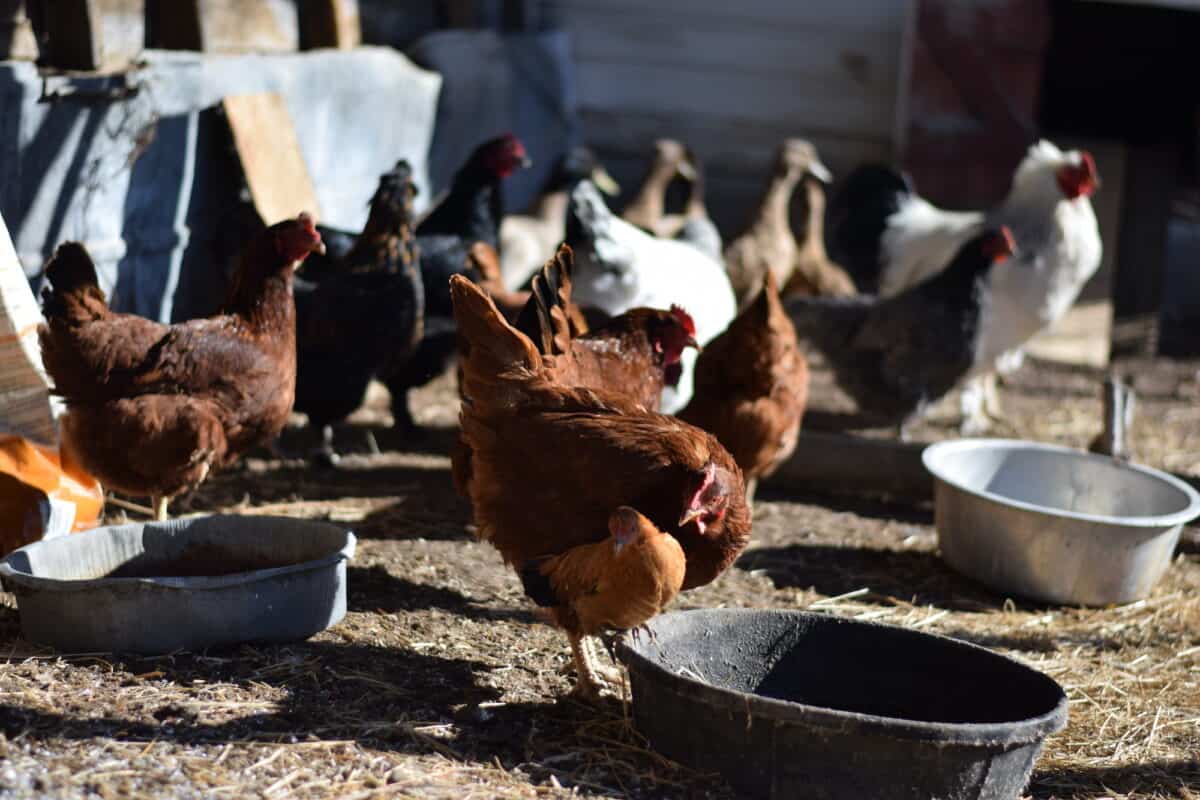
Predator Proofing Your Coop in Winter
During the winter months, there’s an increased risk of predators. Winter can drive predators like foxes or raccoons to seek food more aggressively and we want to ensure the flock is well protected.
Our top tips for protecting your coop especially in the winter months:
- Reinforce coop with hardware cloth, especially around weak points.
- Set up motion-detecting lights or alarms around the coop.
Do Chickens Need Supplemental Lighting?
Extremely cold temperatures can affect egg production, as chickens use more energy to stay warm than to lay eggs. Shorter daylight hours also reduce egg production in winter.
Some people recommend supplementing with lighting to increase egg production. However, I do not.
I know many of us homesteaders rely on egg production for food. But I also prefer to raise happy, healthy chickens. And I do not believe in supplementing with additional lighting. This can also affect their hormones which I’m not ok with.
For our homestead, I prefer to allow our animals to follow the seasonal patterns and if their egg production drops a bit, that’s ok with me. I tend to fall more into a natural method of raising our flock and opt for mostly eco-friendly choices.
My work around this is to hatch chicken eggs often so we have a larger flock than we really need. I know that this may not be for everyone, but it is what I feel is best for our home and lifestyle.
If you choose to use supplemental lighting, there are eco-friendly lighting options available. And you can also install lighting with a timer to mimic natural daylight.
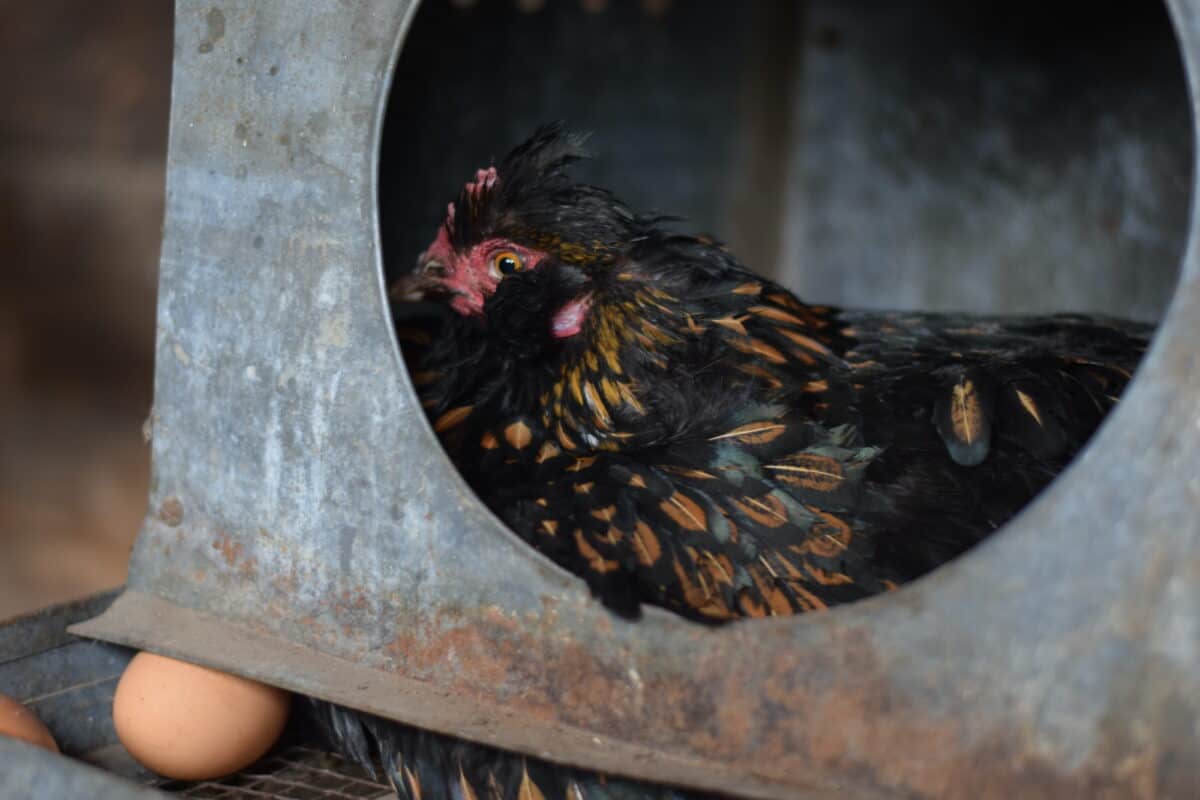
Feeding and Nutrition Adjustments
During winter, chickens need a well-balanced diet with additional calories and nutrients to help them maintain body heat and stay healthy.
During these colder months, chickens burn more calories to stay warm, so providing a nutrient-rich diet is essential. Feeding chickens in the winter may mean that you should supplement to increase caloric intake with treats like cracked corn or black oil sunflower seeds.
Here’s a breakdown of top recommendations for supplements:
- Cracked corn (as a treat for energy)
- Mealworms or sunflower seeds (for protein)
- Leafy greens (like kale, spinach, alfalfa)
- Oyster shells or crushed eggshells (for calcium)
- Animal fat or suet (for fat and energy)
- Probiotics or ACV (for gut health and immunity)
- Grit (to aid digestion)
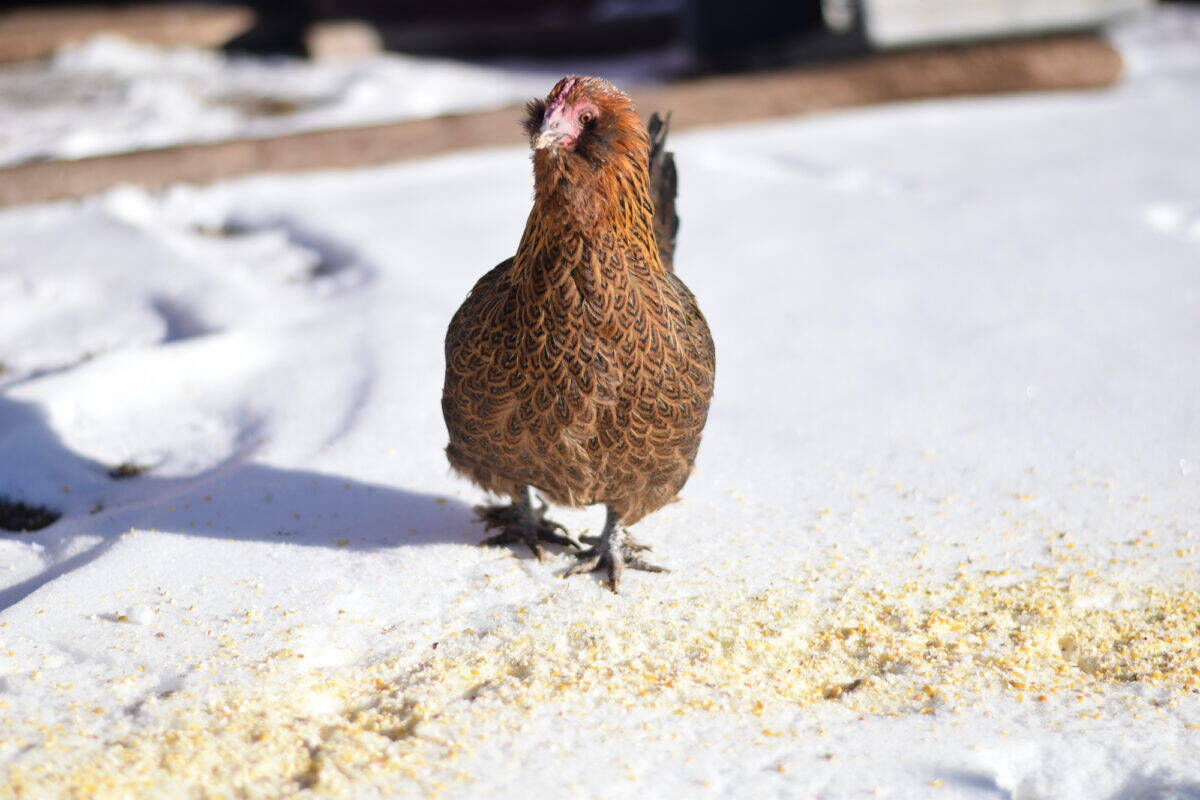
Feeding Chickens in Winter
Chickens expend more energy staying warm in winter, so their regular feed should be enhanced with higher-calorie options.
- Layer Feed: Continue with a high-quality layer feed that provides essential nutrients like protein (16-18%), calcium, and vitamins. This is the foundation of their diet.
- Cracked Corn: A great source of energy, cracked corn can be given as a supplement, especially in the evening. It helps chickens generate body heat while they roost because it takes longer to digest. However, corn should be used as a treat, not as a main feed, because it’s not nutritionally complete.
- Whole Grains: Grains like oats, barley, or wheat are excellent for adding calories. They help sustain energy levels and are more digestible than corn in cold weather.
Protein Boosters
Protein is essential in winter to maintain feather quality and overall health.
- Mealworms: Dried or fresh mealworms are a high-protein treat that helps keep chickens’ feathers healthy and encourages good egg production even in cold weather.
- Black Oil Sunflower Seeds: These are rich in fat and protein. The extra fat helps chickens stay warm, and sunflower seeds also promote healthy feathers.
- Scrambled Eggs: Offering scrambled eggs or boiled eggs (mashed up) is an excellent source of protein and is particularly useful when molting chickens are regrowing feathers. Basically – if we have leftovers from breakfast, I give these to the chickens to enjoy.
Winter Greens
Fresh greens are often scarce in winter, so adding them to your chickens’ diet helps provide essential vitamins:
- Leafy Greens: Kale, spinach, collard greens, and cabbage are great winter supplements for vitamins A and C.
- Alfalfa: Fresh alfalfa (if available) or dried alfalfa can provide important nutrients and give chickens something to peck at.
- Sprouts or Fodder: You can grow wheatgrass, barley, or other grains indoors as fodder to give your chickens a fresh source of greens throughout the winter.
Calcium supplements
Wintertime often results in fewer eggs, but when your chickens are laying, they need extra calcium to maintain strong eggshells:
- Oyster Shells: Free-choice oyster shells are a common and excellent source of calcium.
- Crushed Eggshells: Recycle your own chickens’ eggshells by crushing them up and offering them back. This is a free and natural way to give them calcium.
Extra Fat
Fat helps chickens generate more energy and stay warm in cold weather:
- Animal Fat or Suet: In small amounts, fat from animal sources or suet can be mixed into their feed. It helps boost calories for energy during very cold spells.
- Coconut Oil: Adding coconut oil to feed occasionally is another fat option that is healthy and can support the immune system.
Grit
Chickens need grit (small, hard stones) to digest their food properly, especially in winter when they may not have access to natural sources:
- Crushed Granite or Poultry Grit: Provide grit free-choice so your chickens can eat it as needed to help with digestion, especially if they’re consuming more grains or treats.
Probiotics and Apple cider vinegar
Boosting your chickens’ immune systems is especially important during winter, as they are more susceptible to cold and illness:
- Probiotics: These can be added to water or feed to promote gut health and strengthen their immune systems.
- Apple Cider Vinegar (ACV): Adding a small amount of ACV (1 tablespoon per gallon) to their water a couple of times a week can help maintain a healthy digestive tract and keep waterers clean.
Honey and molasses
- Molasses: A small amount of molasses mixed with feed can provide energy and boost their immune system. However, it should only be given occasionally, as too much can cause diarrhea.
- Honey: A teaspoon of honey in their water can help boost energy and immunity during very cold days.
Scratch grains
Scratch Mixes: A blend of grains such as cracked corn, wheat, oats, and barley, given as an afternoon treat, helps chickens generate body heat overnight. Offer scratch sparingly as it’s more of an energy boost than a nutritional supplement.
Remember, these are only suggestions and chickens don’t need a lot of extra supplements. However, during the winter months – especially super cold days, we like to give our girls an extra boost to keep them happy and healthy.
By providing these additional feeds and supplements, your chickens will have the nutrients they need to stay healthy, maintain egg production (if they continue laying), and endure cold winter temperatures comfortably.

Winter Chicken Care FAQs
→ See this post for more tips on raising chickens in winter. How do you prepare your chicken coop for winter? Share your best tips below.


